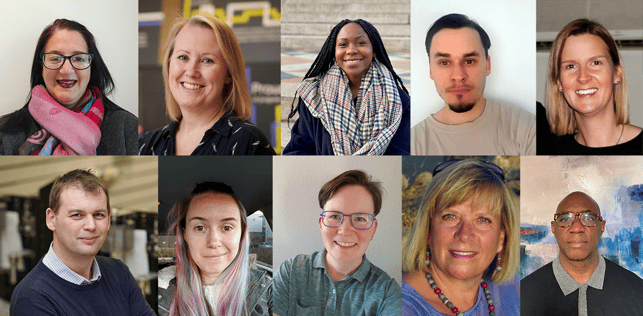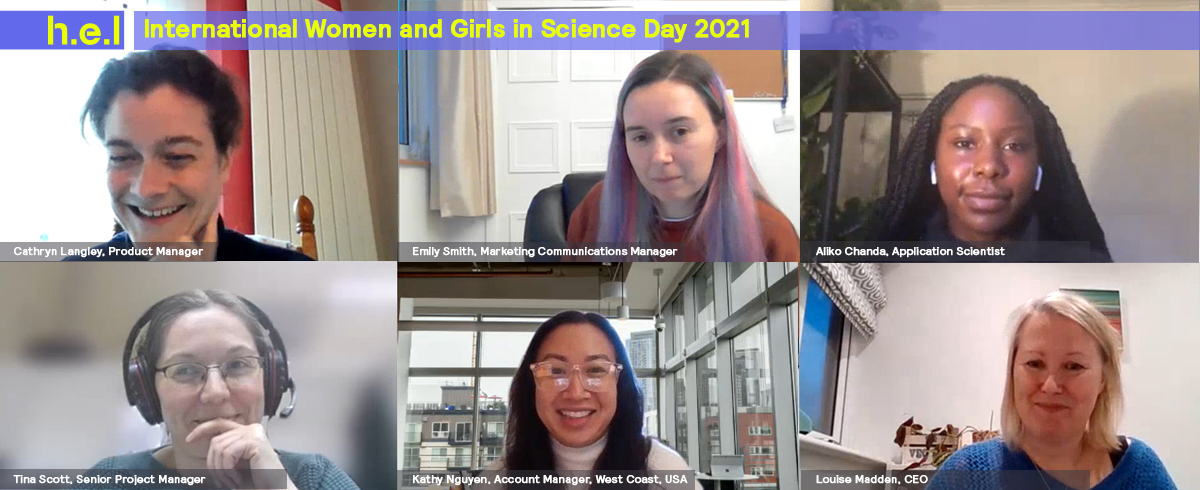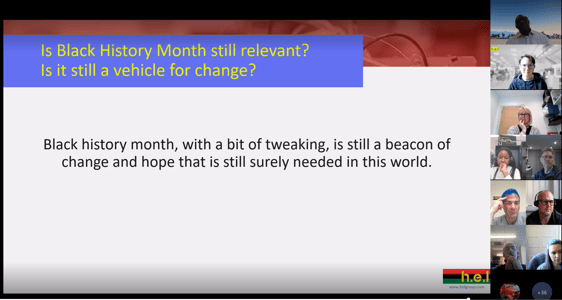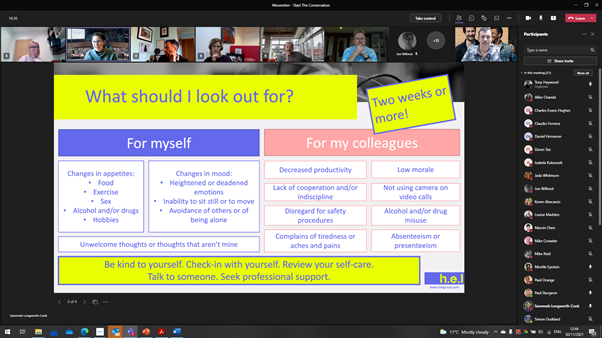2021 saw H.E.L Group create Springboard, its first inclusion and diversity committee, acknowledging that even mid-sized companies have a role to take in opening minds and changing perceptions. This may not yet be a typical response, but we see no reason why not and would like to share our experience and plans for the future.
- Forming the group
- Setting an agenda for change
- Taking responsibility
- Where to from here?

Looking after people’s wellbeing within terms of inclusion and diversity means allowing them to be their whole selves at work. The chronic low-grade stress of worrying how others will react to certain disclosures is a commonality shared among so many including and beyond persons of color, people with disabilities, or those who follow a minority faith. We need to be aware of the small details that go unaddressed and yet drip-feed a message that we are not all made equal.
More senior managers need to understand that apart from this being the right thing to do, such authenticity has many positive impacts. A clear business driver for having a satisfied and heard workforce is that it not only helps you find the best people to recruit, but you’ll also hold on to them to grow and future-proof your organization. Mission statements and corporate values are all very well, but they achieve very little when they remain on the page and are not lived experience.

Springboard’s ten volunteer members share varied seniority and experience and that’s very intentional. It was important from the group launch that it truly represents H.E.L, to create an authentic organizational voice.

Collage image of the ten springboard volunteer members.
(Top row, left to right; Mireille Epstein, Louise Madden, Aliko Chanda, Mike Reid, and Jada Whitmore.
Bottom row, left to right: Tony Heywood, Emily Smith, Sarennah Longworth-Cook, Susan Martin, and Keith Murray).
Forming the group
Volunteers were invited to join Springboard with the hope of creating a group identifiable against the nine protected characteristics of the UK’s 2010 Equality’s Act. At the same time, the membership goal was to also fully represent the needs and experiences of H.E.L’s own people considering the protected characteristics in real-life situations. It’s worth acknowledging that individuals from across diverse teams can have very different day-to-day working lives and workplace experiences.
Small organizations, in particular, may feel challenged to represent all of the fairly broad protected characteristics of age; disability; gender reassignment; marriage and civil partnership; pregnancy and maternity; race; religion or belief; sex or sexual orientation. Think about who you can truly represent and in what ways, keeping it relevant to your industry or business. Focusing on areas pertinent to your unique circumstances can help establish priorities and a way ahead.
Another useful approach is to keep group membership fluid, creating opportunities for staff members to highlight particular issues even though they are not full-time group members. These additional personal insights can be an impactful way to broaden group reach beyond its core membership.
Committee members at H.E.L have made a commitment to be good allies in an inclusion and diversity setting. This involves educating themselves about some of the issues others face and accepting that education sits at the heart of the work. The effect is to step away from the perception that if you’re going to do something like this you have to be correct 100% of the time otherwise the risk of causing offense is too great. Instead, Springboard is taking the view that something is definitely better than nothing, and it’s ok to work hard to get it right.
Setting an agenda for change
Education to inspire conversations for greater understanding and heightened wellbeing are Springboard’s key objectives. The group delivered kick-starter events for International Women’s Day, Pride Month, and Black History Month and are already planning their 2022 calendar of talking points. The program is carefully planned to combine historical context with current colleagues’ lived experiences, taking this stance to equip people factually to build understanding, reform opinion, and remove barriers.

“Believe in yourself!” – Screengrab taken from our reflections from women in science session, February 2021. Read our full blog HERE
Engagement with Springboard’s virtual, non-compulsory education sessions has been high, with two-thirds of the company attending. As an organization with a wide employee age range, take-up is excitingly happening across its demographic. People seem curious, valuing the opportunity to learn and ask questions in this environment built on mutual respect. The desire is for these themed events to be just the start, raising awareness and creating talking points for times away from training when colleagues reflect on what they hear, discuss with co-workers, friends, and family, and behaviors and actions change as a direct response.
H.E.L does offer diversity awareness modules among its corporate training program but none of this is compulsory and there is little appetite to change the model. Taking away free choice may help completion rates rise but engagement in understanding and the appetite for change diminishes.
You can’t go up to somebody cold and say ‘Hey, I’ve watched a 40-minute video on diversity. What’s it like to be…”. But once you’ve heard directly from a colleague what it feels like there’s an immediate human interest and desire to understand. This opens conversations from a standpoint of curiosity and knowledge sharing.
 “Is Black History Month still relevant?”: Screengrab taken from a presentation given on company all-hands during UK Black History Month 2021.
“Is Black History Month still relevant?”: Screengrab taken from a presentation given on company all-hands during UK Black History Month 2021.
Taking responsibility
You don’t need a dedicated division tasked with diversity. Nor should people’s goodwill be extended too far. Colleagues given time within their natural day to handle committee functions will do so without feeling an expectation to fit them in during their free time. Full corporate commitment means responsibilities should be fully funded and carried out as part of regular working hours.
Within a few months of starting, Springboard has been able to have a fully-fledged diversity, inclusion, and equality policy within H.E.L’s staff handbook. From here, the organization can adopt and live the document, so that the message gets out and change happens. Then, the final piece of that puzzle is colleagues having conversations about these topics in the workplace because it is now a safe space to do that.
 “Start The Conversation” – Screengrab taken from our informal mental wellbeing session during Movember 2021
“Start The Conversation” – Screengrab taken from our informal mental wellbeing session during Movember 2021
Where to from here?
It’s OK not to know but the response should always be what do we do to find out. Discover what it’s like from another’s perspective, coming from a place of genuine interest. Let’s step away from ignorance because not asking feels more comfortable and getting it wrong is a by-product of not caring quite enough to get it right.

The more we learn enriches and improves relationships and reinforces wellbeing. If you need a business perspective, happier people will deliver better business results. This is not something you can put a pin in and say we’ve improved diversity by this amount, so we should expect to increase profit margins by this. It is not that direct, nor should it be.
We continue to strive to increase understanding because it makes H.E.L an amazing place to work and invites you to do the same for your organization.
If you would like to find out more about our current job vacancies take a look HERE.






